We’re only about ten matches into the Premier League season, but it’s already possible to pick out some standout performers. Elliot Anderson is one of those players, and his links to Manchester United and Newcastle are just as unsurprising as his recent England callups. The Nottingham Forest midfielder brings dynamism and creativity to his side through carries and passes, and his defensive eagerness is an undeniable asset out of possession. In this article, we’ll dive deep into the data and look at the numbers behind one of the Premier League’s newest – and most unique – rising stars.
Elliot Anderson’s transfer from Newcastle to Forest in the summer of 2024 was met with a little bit of upset. With the player coming through the club’s youth academy, the pure profit that Newcastle received with his £35 million sale was enough to balance the books with respect to the league’s Profit and Sustainability Rules. Despite only picking up 3 senior assists for Newcastle, Anderson hit the ground running at Forest, scoring twice and assisting teammates six times during his 37 appearances in the 2024/25 season.
This season, however, Anderson has taken things up a level. Whilst his 2 goal contributions in 10 games so far is on course for a lower return than last year, his numbers show signs of a player whose output cannot be ignored.
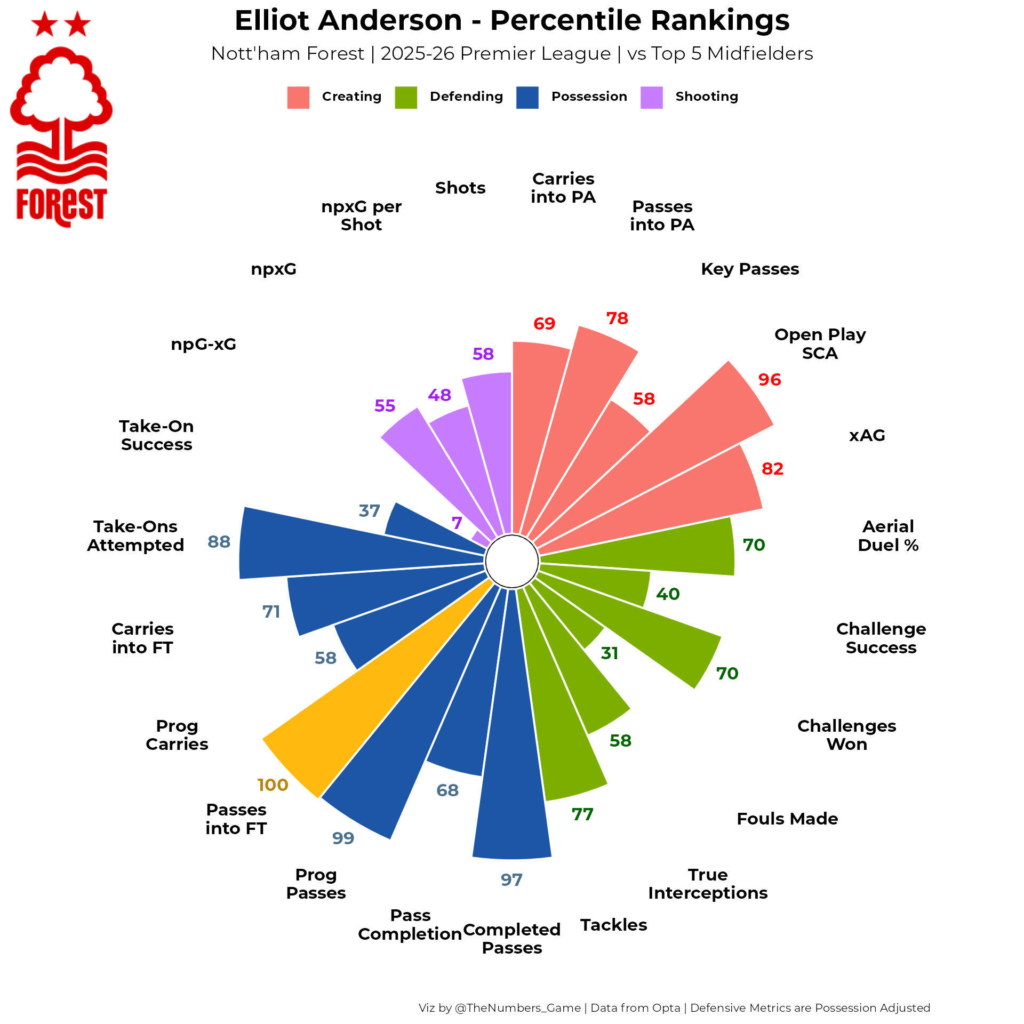
Volume within ball progression is where Elliot Anderson shines. Compared to midfielders in Europe’s top five leagues, the 22-year-old ranks amongst the elite for completed passes (97), progressive passes (99), passes into the final third (100), attempted take-ons (88) and carries into the final third (71). It’s obvious to see that Anderson loves to get forward on the ball, driving his team through both passes and carries.
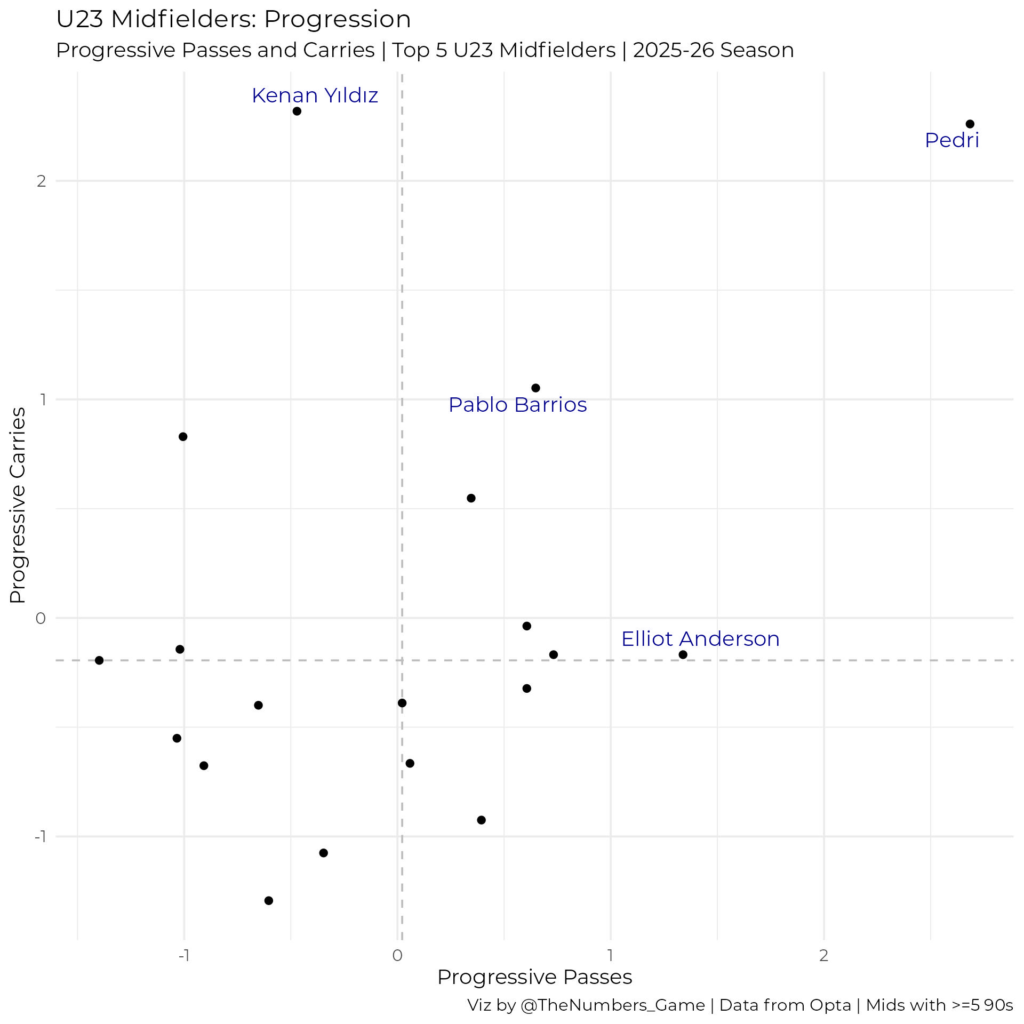
In fact, his multifaceted progression style is quite unique. Looking at u23 midfielders in Europe this season, Anderson finds himself in a small group of players that excel in both progressive passes and progressive carries. This dual nature makes him versatile, being able to adapt to different game situations.
This ability on the ball carries over to his creativity in the final third. Anderson ranks in the 96th percentile for open play shot creating actions and in the 82nd percentile for expected goals assisted. With Anderson ranking well in both carries and passes into the penalty area, we once again see his diversity in ability.
Anderson’s shooting numbers aren’t super impressive, with average rankings with respect to volume and a low ranking for xG overperformance (7). But his game isn’t based around goalscoring – it’s everything else that he excels in.
Off the ball, we get an idea of why Anderson is seen as a complete midfielder. Coming with above average rankings in tackles (77), true interceptions (interceptions + blocks) (58), challenges won (70) and aerial duel success (70), Anderson is again an anomaly when it comes to volume. It’s a sign of a player with heaps of stamina, that can act as the engine room for Forest.
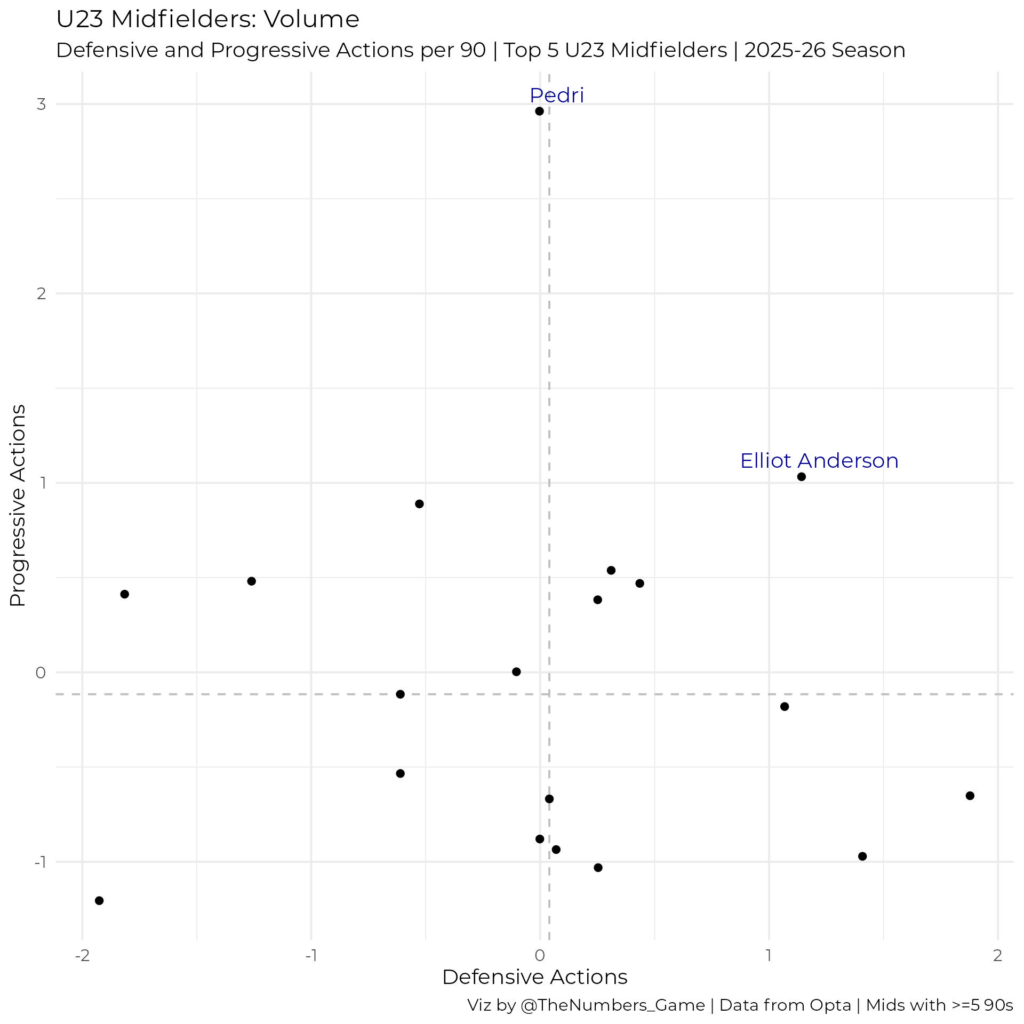
Yet again, Anderson stands out amongst his peers when combining both in and out of possession volume. Again, looking at u23 midfielders, Anderson is the only player to lie one standard deviation above the mean for both defensive and progressive actions per 90. In other words, Anderson is the only player with elite levels of volume in getting the ball forward and winning the ball back. Thinking about that Sean Dyche quote: “Put the ball in that end, stop it going in that end”, Anderson epitomises this.
We can take a closer look at Elliot Anderson’s abilities in practise by zoning in on one particular game. Nottingham Forest recently held Manchester United to a 2-2 draw in what could have been seen as an audition for the midfielder, and if so, a callback should be expected.
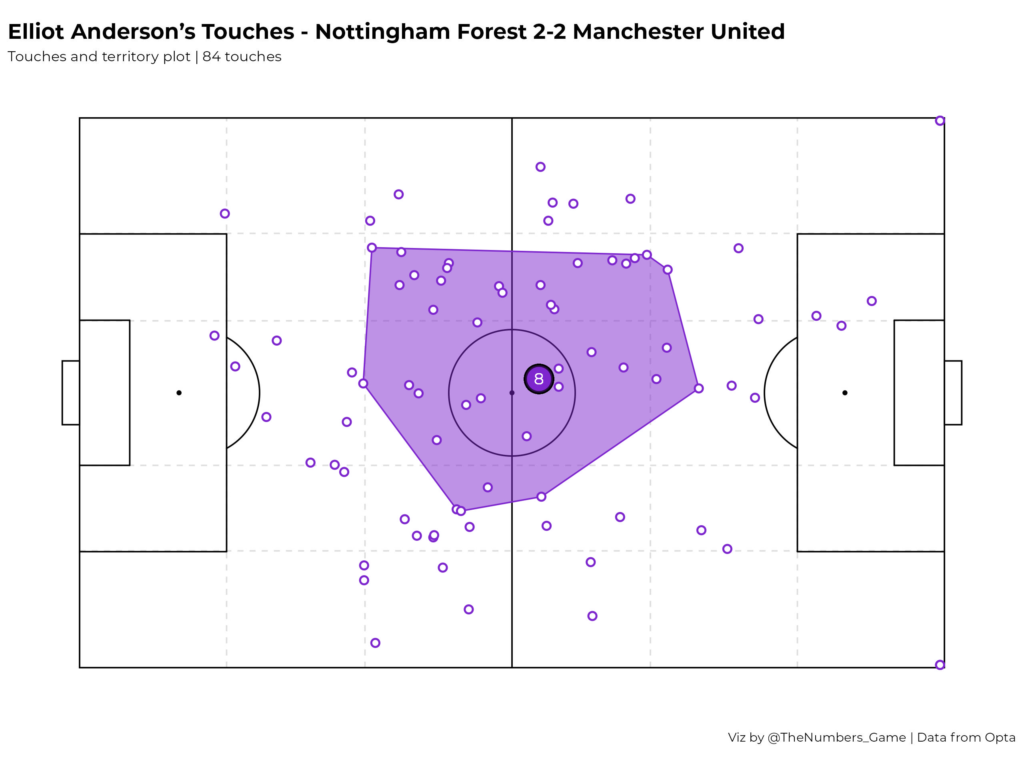
Looking on a high-level, Anderson was ever-present across the pitch, with his territory spanning a large range of the central area. Touches in both boxes and on both wings gives us the sense of a player who roams around the field, generating impact wherever possible. Whilst this may raise concerns about positional discipline (Bruno Fernandes has often been criticised for his roaming), we’ll see through further analysis that Anderson’s wide reach was only a positive against United.

Anderson’s passing range was impressive. Most of those passes were of a medium length, but with an overall 70% pass completion, we can conclude that they were also quite accurate (especially since around a fifth of his unsuccessful passes came from corners). His longer passes generally came from the right-hand side into the final third on the wing, whilst his short passes normally veered towards the left. A lot of the analysis done so far has focused on Anderson’s versatility across different action types, but even with his passes alone, he showed his adeptness moving the ball over different lengths and angles.
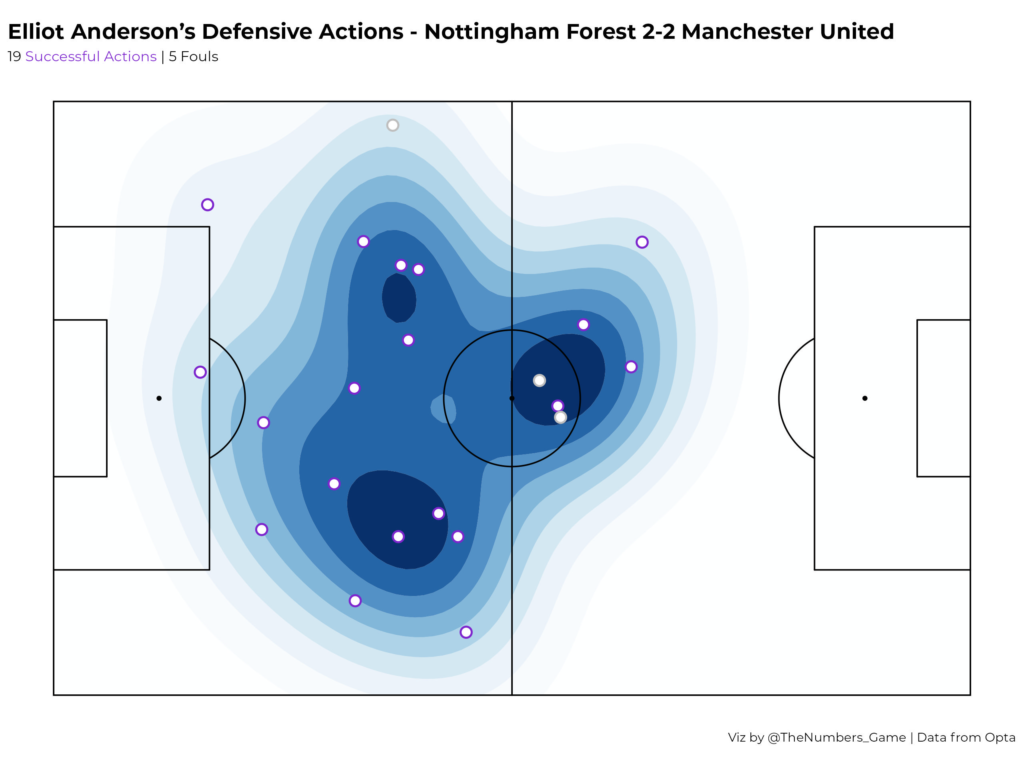
Off the ball, the domain of Anderson’s defensive presence was expansive, with his successful actions spanning both halves and the full width of the pitch. As mentioned before, a player who finds himself all over the pitch may be accused of poor discipline, but with Anderson’s actions mostly being successful, we’re safe to say that he did well as a defensive screen.
This season is still young, and whilst Anderson has shown class across the 10 matches he’s played, it’s perhaps still too early to laud him as one of Europe’s best midfielders – after all, Forest have struggled this season, and the movement from Nuno Espirito Santo to Ange Postecoglou and then to Sean Dyche could create the kind of tactical inertia that could throw off even the greatest players. However, to any team able to prepare the £100m and above that Forest would ask for, Elliot Anderson is definitely one to watch in the coming weeks and months – and years, if he continues this current trajectory.

